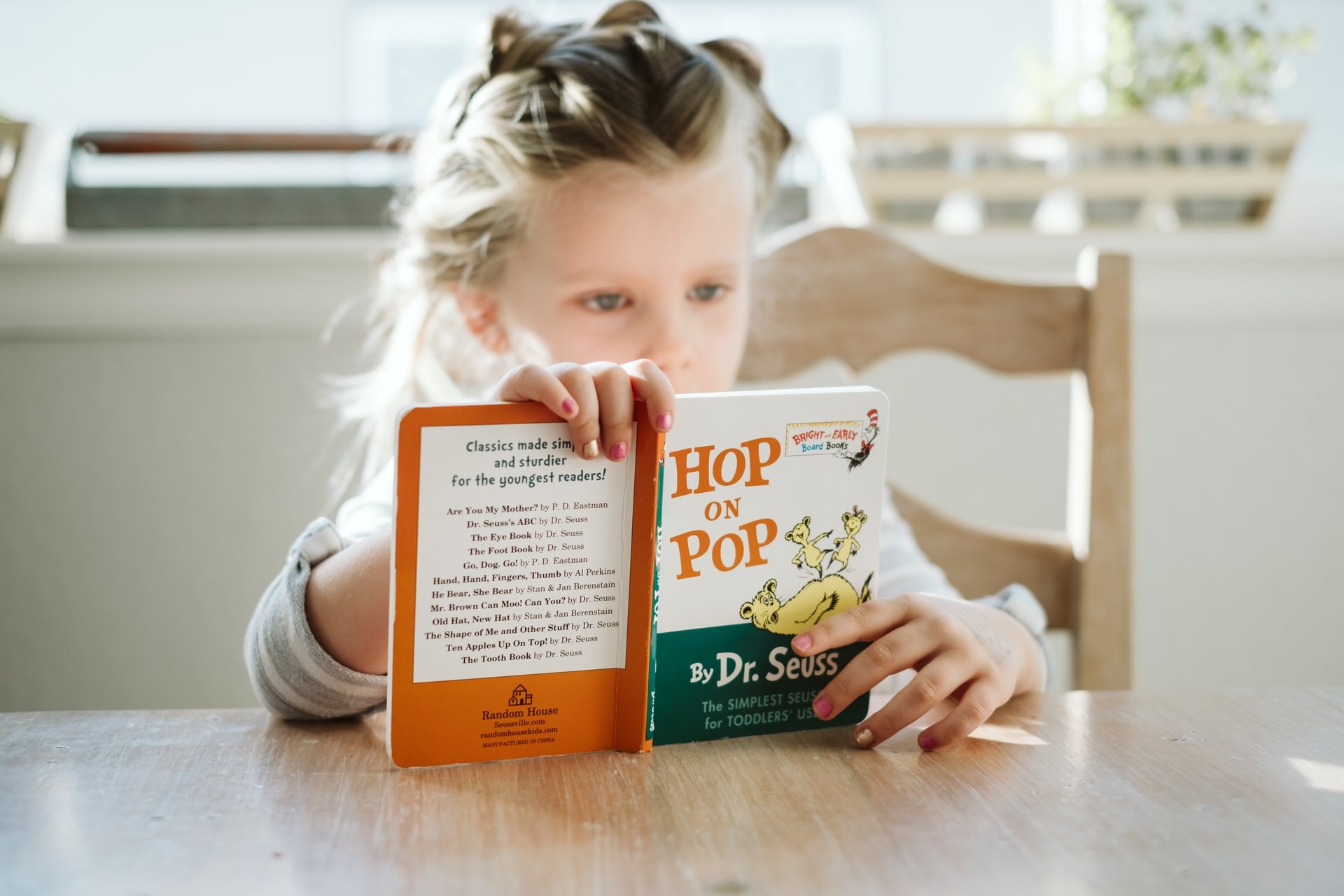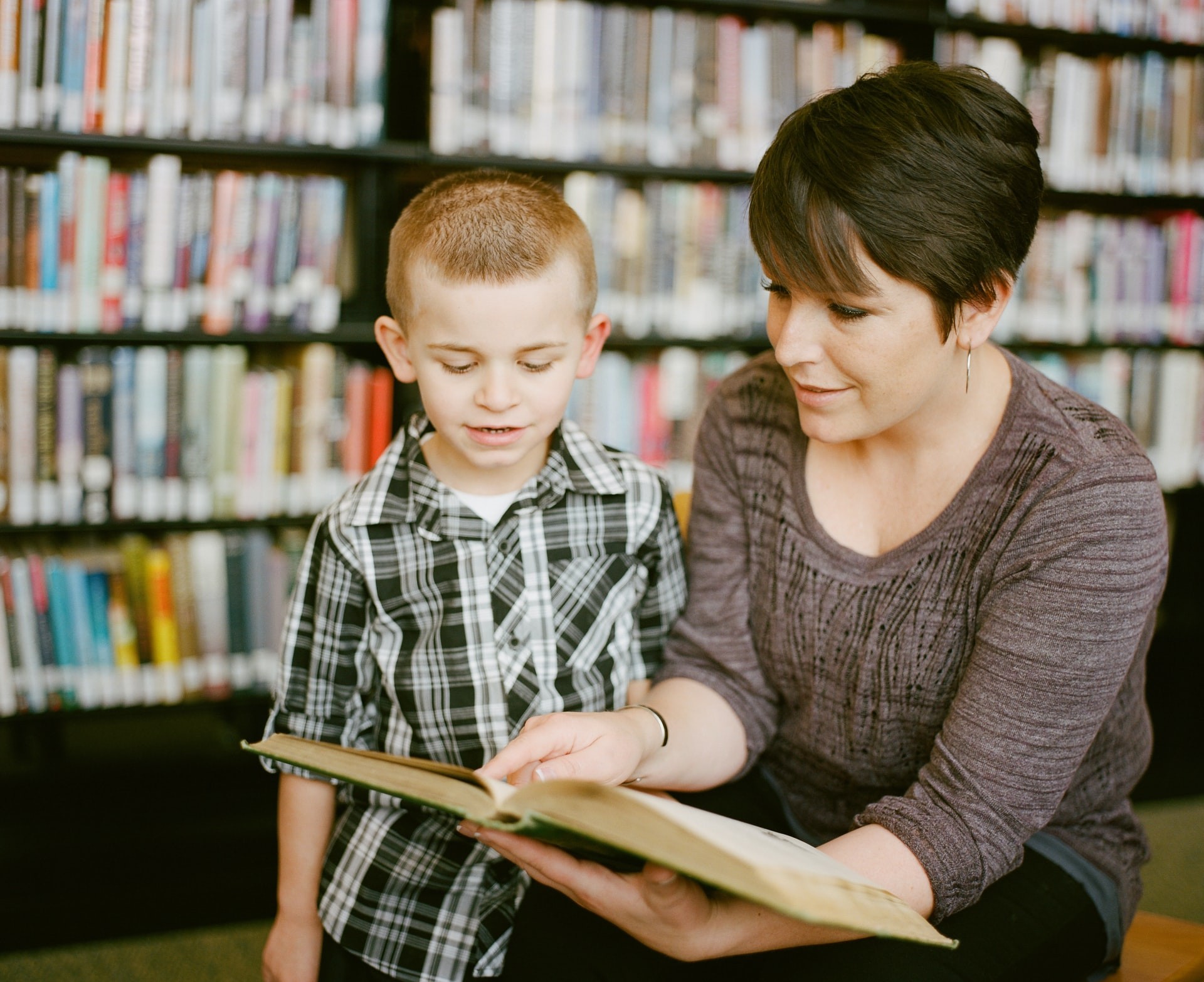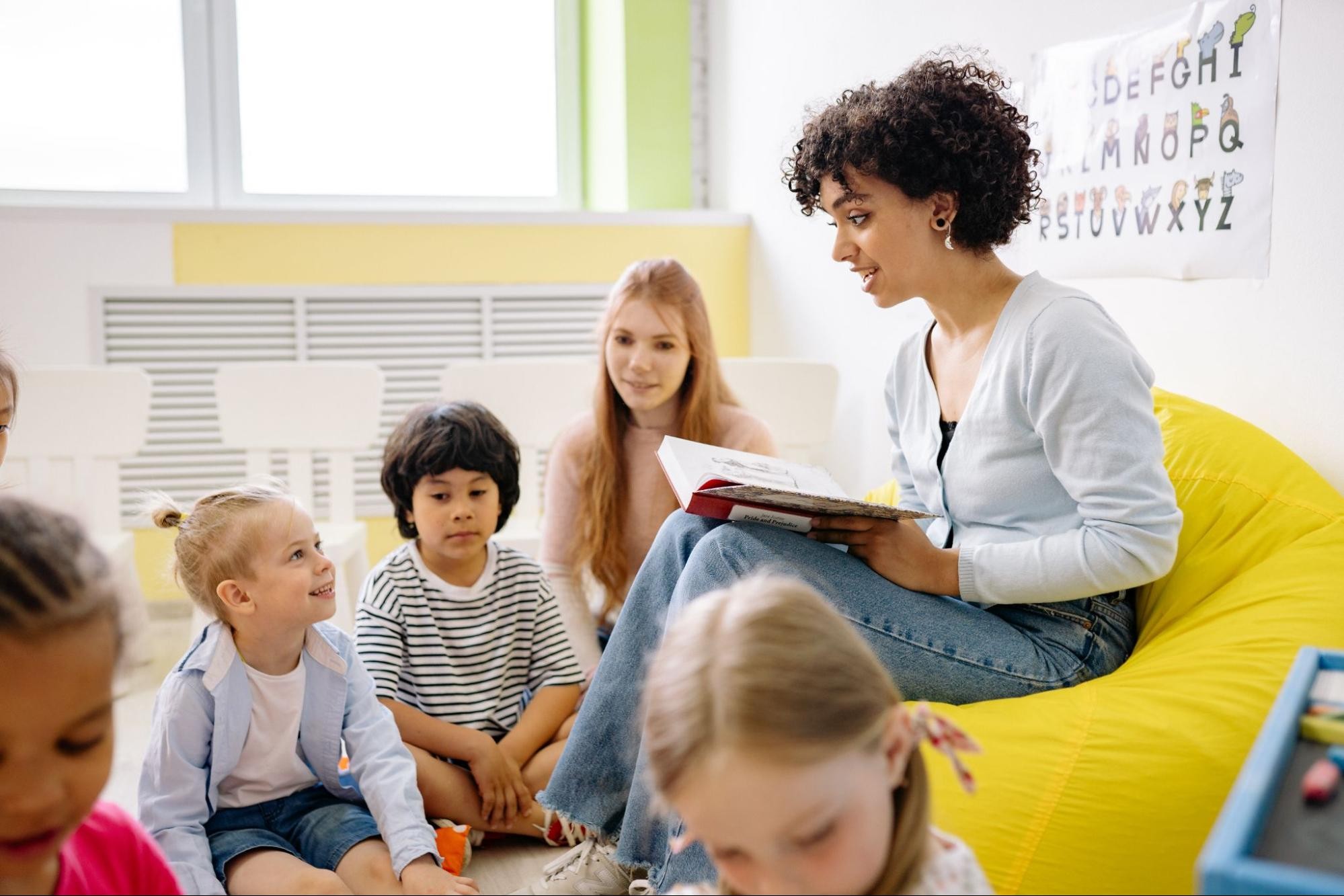What Are the 7 Strategies of Reading?
Learning how to read is one of life'due south greatest pleasures. Students demand this important skill to advance through each form and eventually into college or the workplace. In the long run, they'll develop a love for reading that benefits them throughout their entire lives.
But what happens to students who wrestle with their reading skills?
Reading strategies and techniques tin can aid students to become excellent readers during any schoolhouse yr. Through active reading and other methods, kids can increase their vocabulary and proficiency. Reading techniques do good struggling students and offering them constructive ways to get a ameliorate grasp on learning how to read.
Nosotros've outlined seven reading fluency strategies to reduce students' stress, build their conviction, increase comprehension and help them acquire from older kids.
Understanding reading strategies
Reading strategies are specific procedures that help students await at printed words and interpret their meaning. Learners improve their comprehension, empathise what they've read and advance their reading skills into loftier school and across.
There are several constructive reading strategies designed to heave students' agreement of the written give-and-take:
1. Making connections — Connect new words with students' prior noesis and favorite hobbies, activities or places they've visited. Use texts that relate to globe problems to provide students with another way to deepen their reading comprehension.
ii. Inferencing— When reading the text, students take their by knowledge and arrive at a conclusion based on the clues they receive from what they've read.
3. Synthesizing — Students combine new data with their prior knowledge to formulate a new idea or idea.
Instructional strategies ensure students receive the all-time learning outcomes.
Skills required for reading comprehension

Nigh people await at reading equally a basic skill learned in elementary school. Nonetheless, reading encompasses much more than than knowing how to pronounce words correctly. It involves reading comprehension skills and overall understanding.
Students who continue to struggle with comprehension difficulties may fight to cope with:
- Poor vision
- Hearing loss
- Decoding problems
- Loss of concentration
- Learning disabilities, such as dyslexia, ADD or ADHD
- The inability to understand what specific words mean on their own or when used in a sentence
In that location is help available to students and then that they can learn how to read effectively.
Here'southward a list of six reading comprehension skills that teachers can use to help their students develop these abilities:
- Decoding is a foundational reading skill that uses phonetics to understand pregnant. Students begin by pronouncing words without having seen how it's spelled. Edifice phonological awareness facilitates the use of rhyming, sounds, and songs, which can in plough assistance students utilise decoding strategies.
- Building vocabulary is a key component in supporting learners every bit they build their comprehension skills. Practice new words with students to increase their vocabulary. Kids proceeds conviction in their reading abilities when they acquire how to pronounce and spell unfamiliar words.
- Reading fluency. The greatest obstacle to fluency is give-and-take recognition. It tin can take several tries before a pupil recognizes a discussion and knows its meaning. Encourage your students to read books often to build their reading fluency.
- Putting words together to write a cohesive sentence remains a tiptop skill. Frequent lessons in sentence structure and grammer reinforce reading and writing skills.
- Retentiveness and focused attention. Assistance students ameliorate their retentivity and attending through classroom games and activities. Since kids love educational games, they're likely to progress much faster.
- Groundwork knowledge. By experiences and prior noesis are nifty edifice blocks in helping students to get the gist of a word or phrase. Encourage kids to build their knowledge through reading, learning more about art, watching Tv shows and having meaningful conversations with parents.
Equip your students with the above skills to support their reading comprehension progress.
Best strategies for reading improvement

There are lots of reading comprehension strategies you can use to help students improve their reading skills. Information technology's vital to each student'due south success to abound their reading and annotation skills as they climb each grade level.
Yous can use ane or more strategies and key details to enhance each student's learning experience:
i. Assign reading partners, cantankerous-grade or peers
Pair up ii kids from different grade levels to work together. They tin help each other better reading comprehension regardless of their form level. Both older and younger students benefit from this organization.
Younger kids can learn something new from older students. They also get to come across how much their reading can improve in higher grade levels.
Older kids who struggle with reading feel less force per unit area to read books from higher grades when they're partnered with little kids. Information technology's a great way to increase reading fluency.
2. Visualize reading passages
The central ingredient for visualizing passages is to encourage students to create mental pictures or movies in their minds. They tin accept their prior knowledge and combine it with their own visualizations. Kids may identify with characters and the story'south world.
Employ picture books or text with descriptive linguistic communication to promote the use of this technique. Exist sure to inquire students questions such as:
- "What did you come across every bit y'all read the passage?"
- "What do yous remember [character] looks similar?"
- "Can you describe a picture of the story's setting?"
3. Endeavor reading aloud

Reading aloud promotes fluency and literacy. As teachers and parents read to children, it builds their linguistic communication development and communication skills.
It'south easy to keep kids engaged as they pay attention to their instructor's articulation and cadence. Be sure to involve your students by inviting them to comment on the story and ask questions.
4. Follow up reading with class discussions
After you finish reading a book to your students, offset a class discussion to assistance students retain what they've learned. Past directing comments and questions to students it encourages them to participate.
Here are a few tips to consider when post-obit up with class discussions:
- Invite students to write notes for the discussion. They may provide interesting points on why they agree or disagree with the topic.
- Encourage students to jot downward the things that they don't sympathise so that you can clarify these points for them.
- Enquire a thought-provoking question or serial of questions to promote active grade participation.
- Break the class into smaller groups to promote deep conversations among students.
5. Do some choral reading
Choral reading occurs when teachers and students read a passage together. Students learn how to pronounce tough words, boost conviction, increment vocabulary and meliorate reading fluency.
Choral reading works very well when teachers pair two students together. Each student takes turns reading out loud while the other pupil actively listens. This scenario helps struggling students when they're working with a strong reader, and a 2007 study showed that partner reading improves reader fluency.
vi. Create reading quizzes

Reading quizzes bear witness teachers where students' strengths and weaknesses are when it comes to reading comprehension.
When creating interactive or print quizzes, you can use backup-the-blank, true/fake or multiple choice test questions. Pose a variety of question types to claiming your students without making the quiz impossible to complete.
7. Play question the text
Utilise the "Question the text" method to keep kids interested in reading. Get them to enquire questions, specially if they don't understand what they've read. Request questions about the text brings pregnant to the reading material. Students can also form their own opinions well-nigh the passage or text.
Runway progress and seek areas for improvement
Brand notes of each student's progress to gain a better sense of kids' strengths and weaknesses. This helps y'all address issues immediately. You can adjust lesson plans to accommodate and set up learning gaps and amend reading comprehension skills.
The digital tools outlined beneath simplify tracking student progress:
- Crowdsignal helps teachers create quizzes, questions and online polls. Students cease all assignments on tablets or computers. Once completed, teachers generate reports to make up one's mind any grey areas that require attention.
- Formative allows educators to assign activities to students, receive results, and track progress in real-time.
- Biblionasium provides teachers with access to the number of books that students have read. Educators can inspire kids to read and support active discussions amidst students.
There are a number of terrific means to ensure teachers can successfully track students' progress. These digital tools make tracking and assessments a quick and efficient employ of time.
As you teach, proceed encouraging students to inquire questions and claiming themselves as they read. When you lot work with them to build comprehension, y'all're also working with them to build a love of reading!
Prodigy English is a brand-new game-based learning experience that helps students build key reading and linguistic communication skills in a world of their own. As they play, yous'll be able to rails their progress and achievement.
Join the waitlist to be the beginning to know when Prodigy English is prepare for you and your students!
Source: https://www.prodigygame.com/main-en/blog/reading-strategies/
0 Response to "What Are the 7 Strategies of Reading?"
Post a Comment